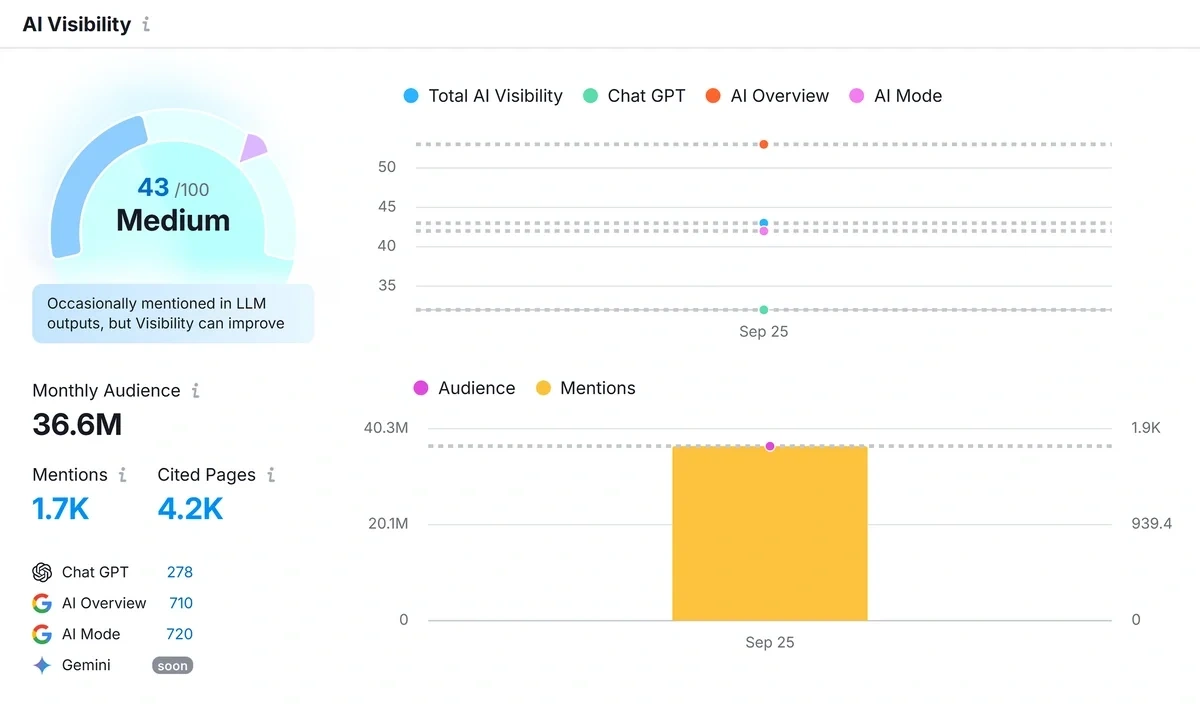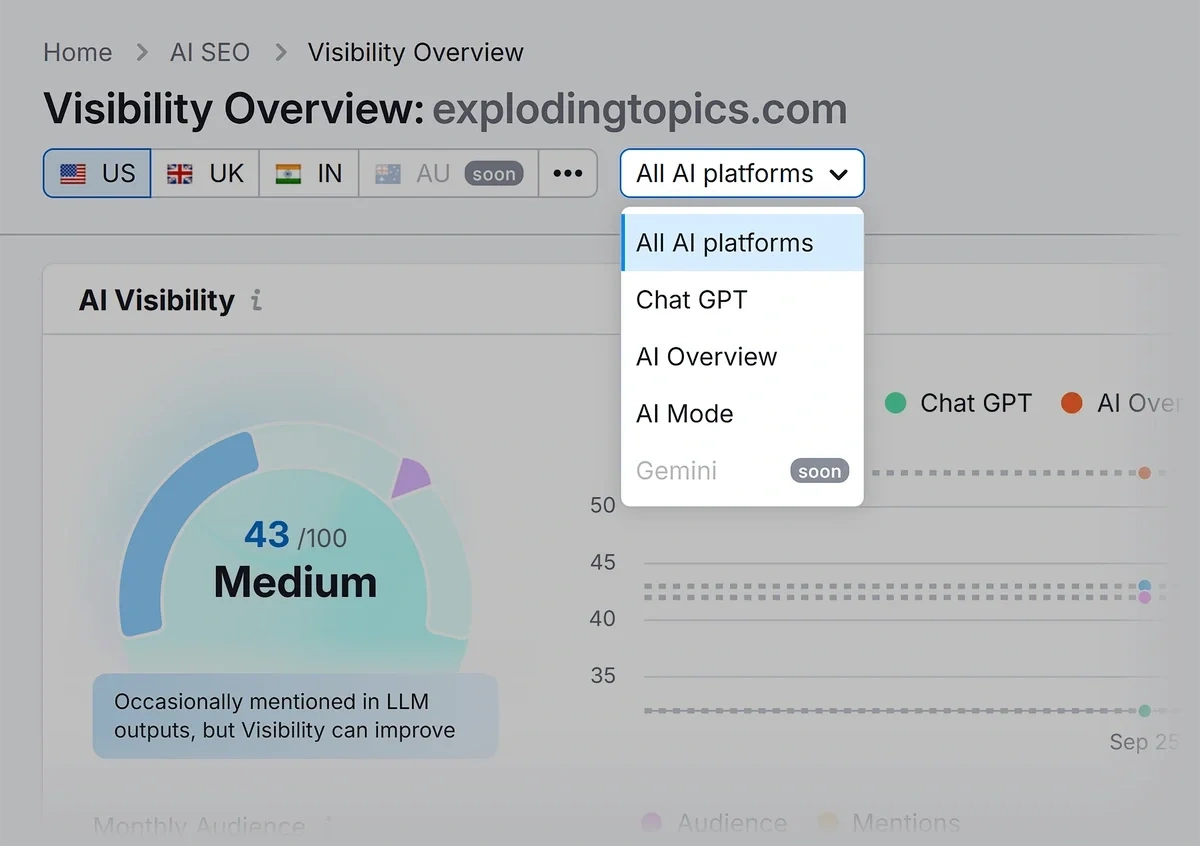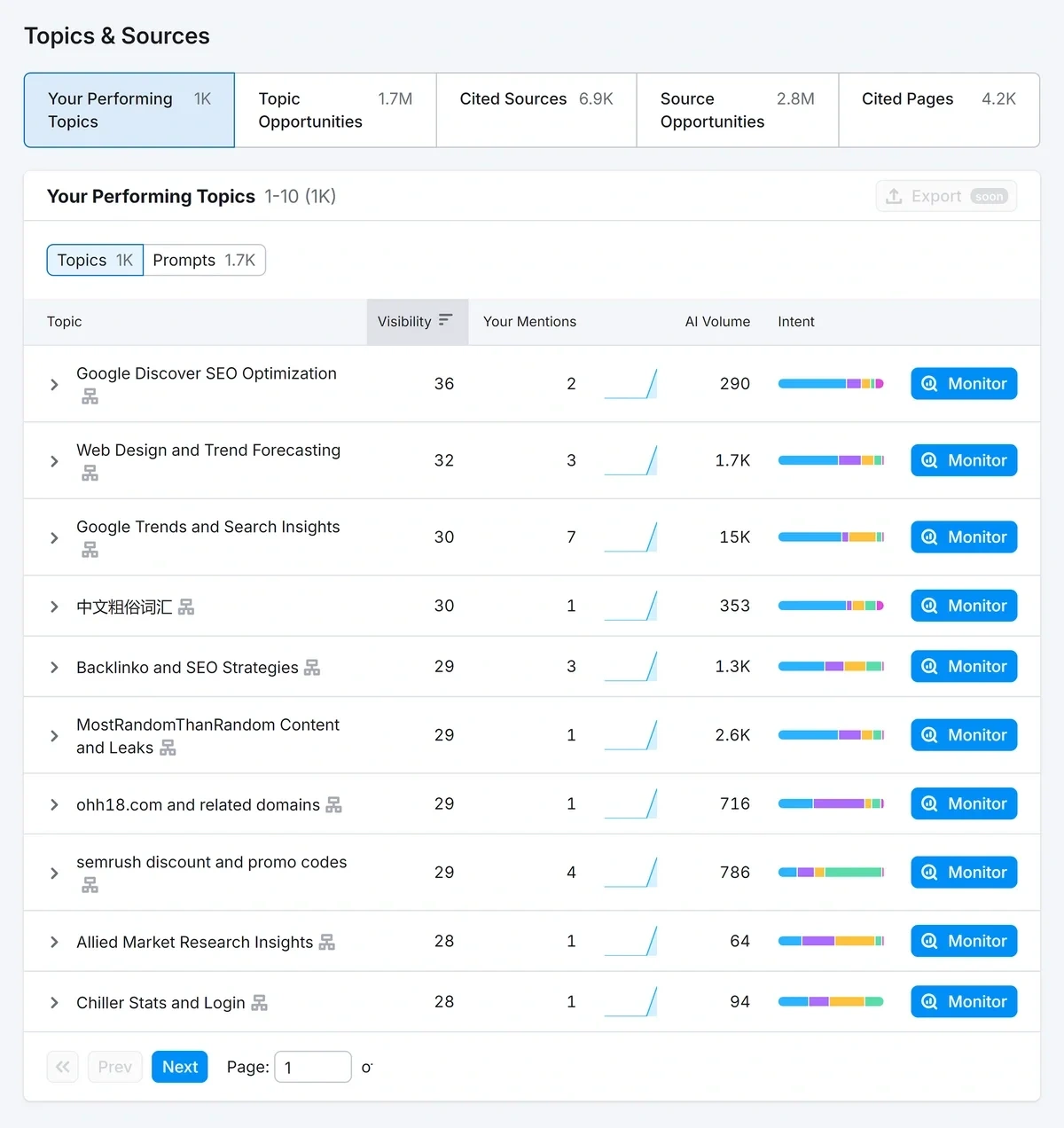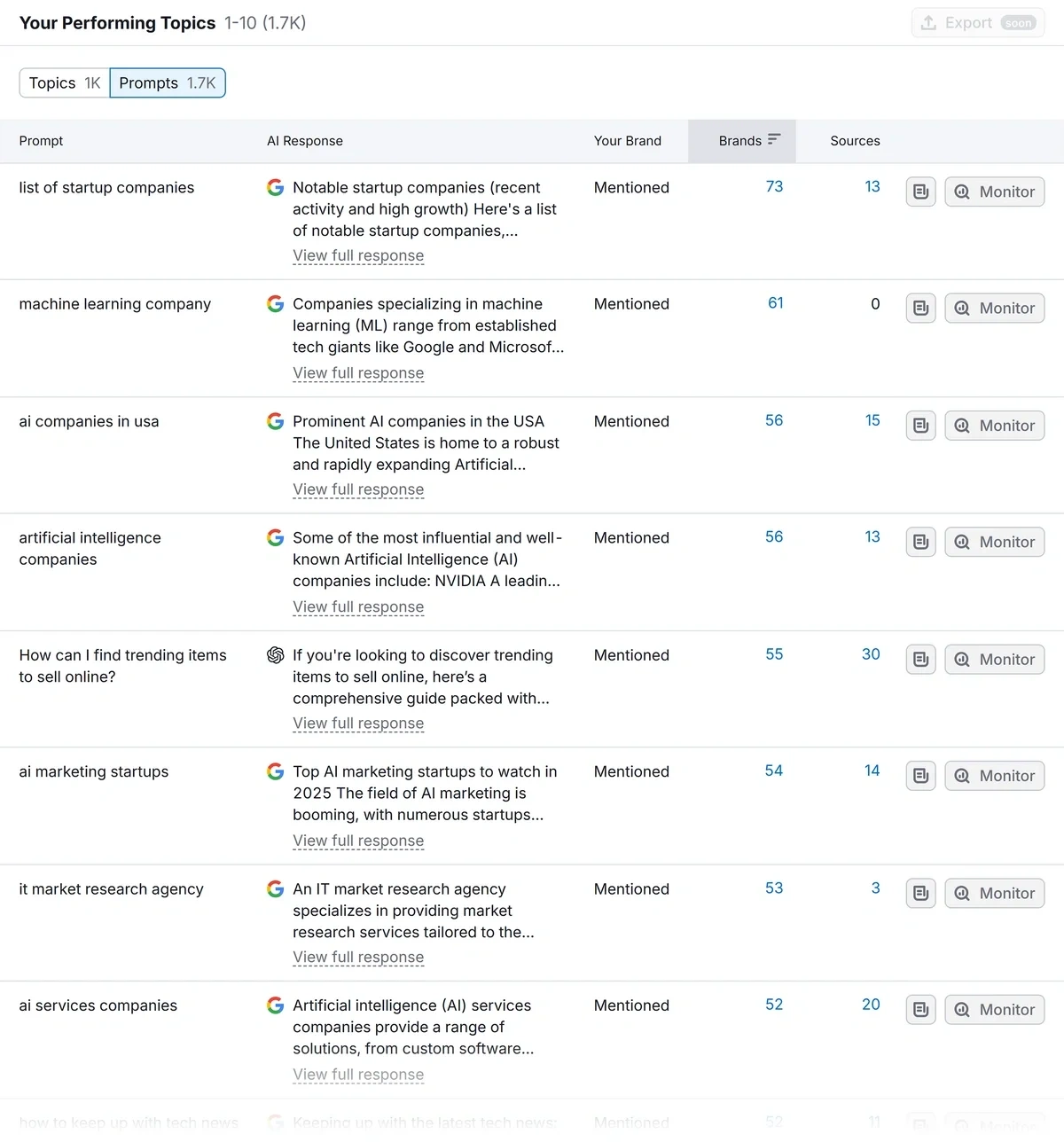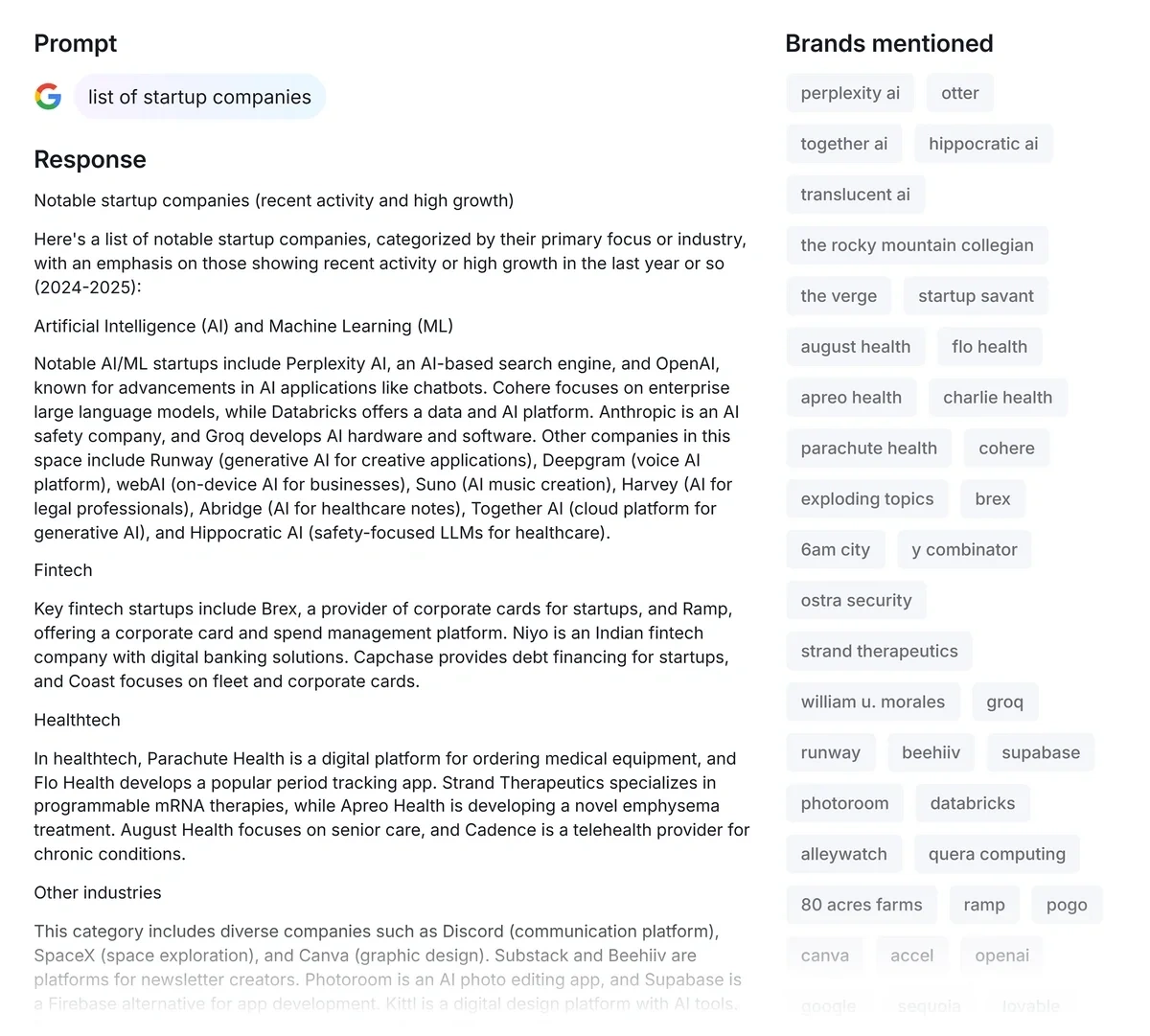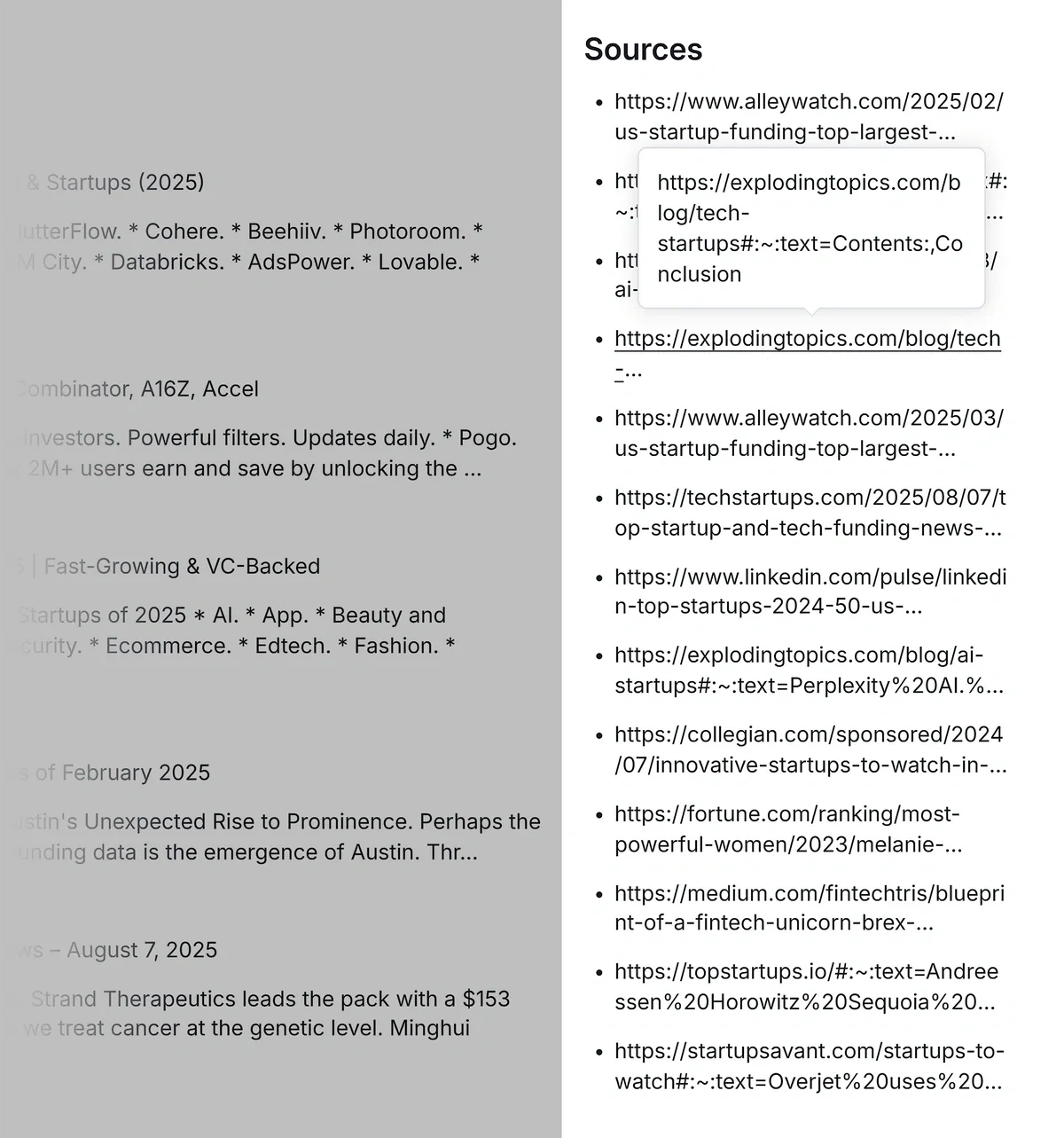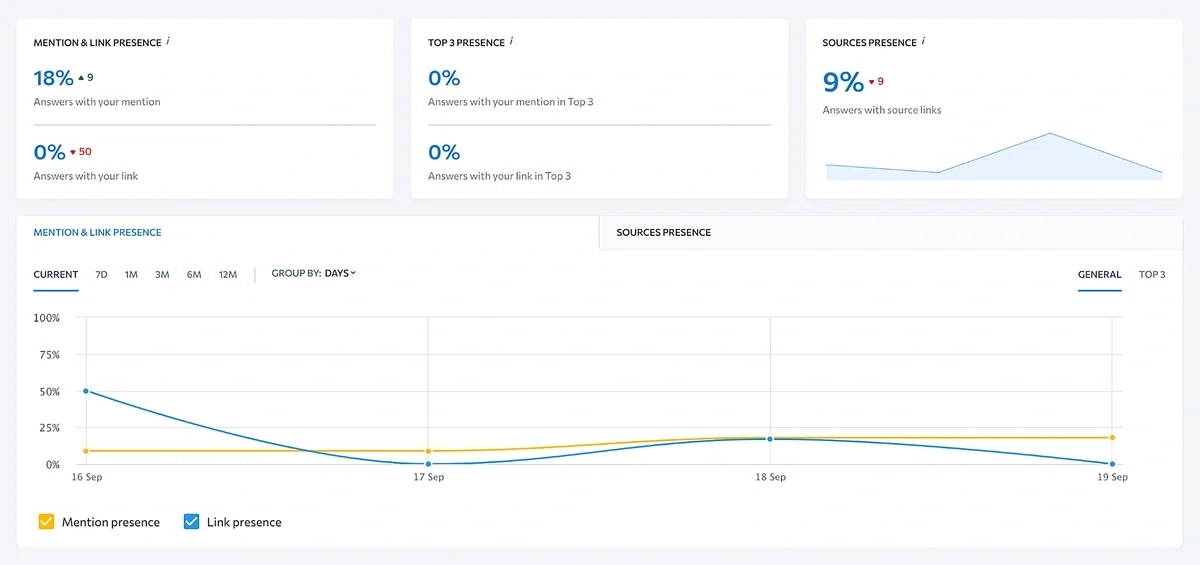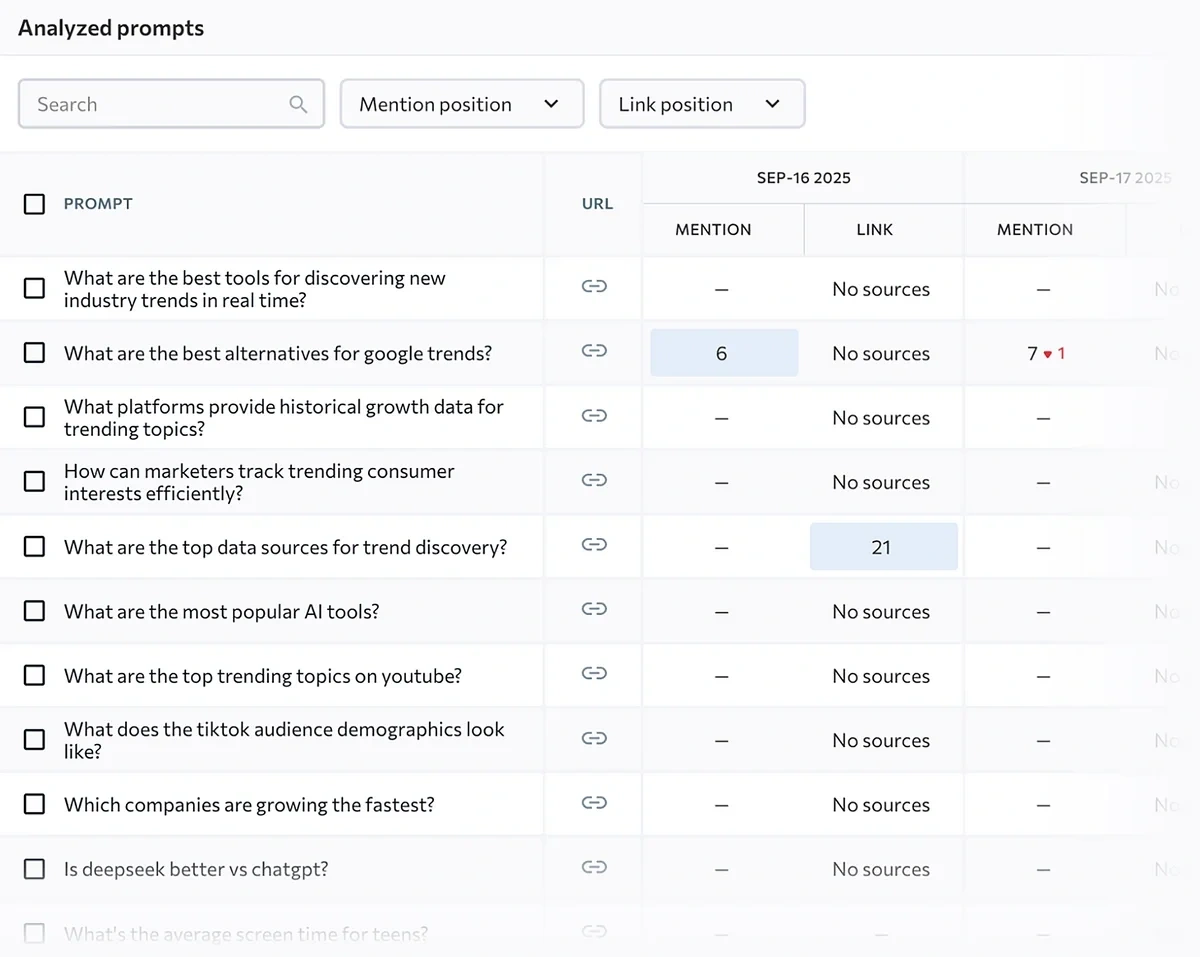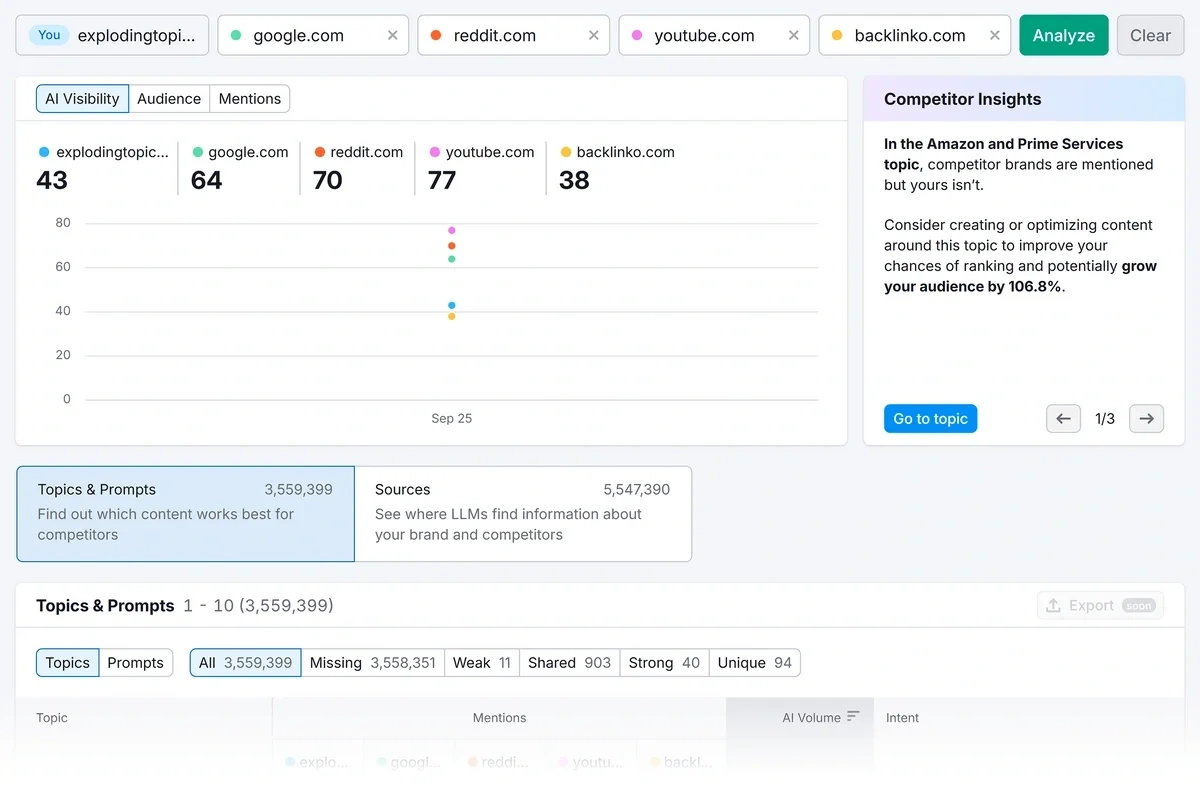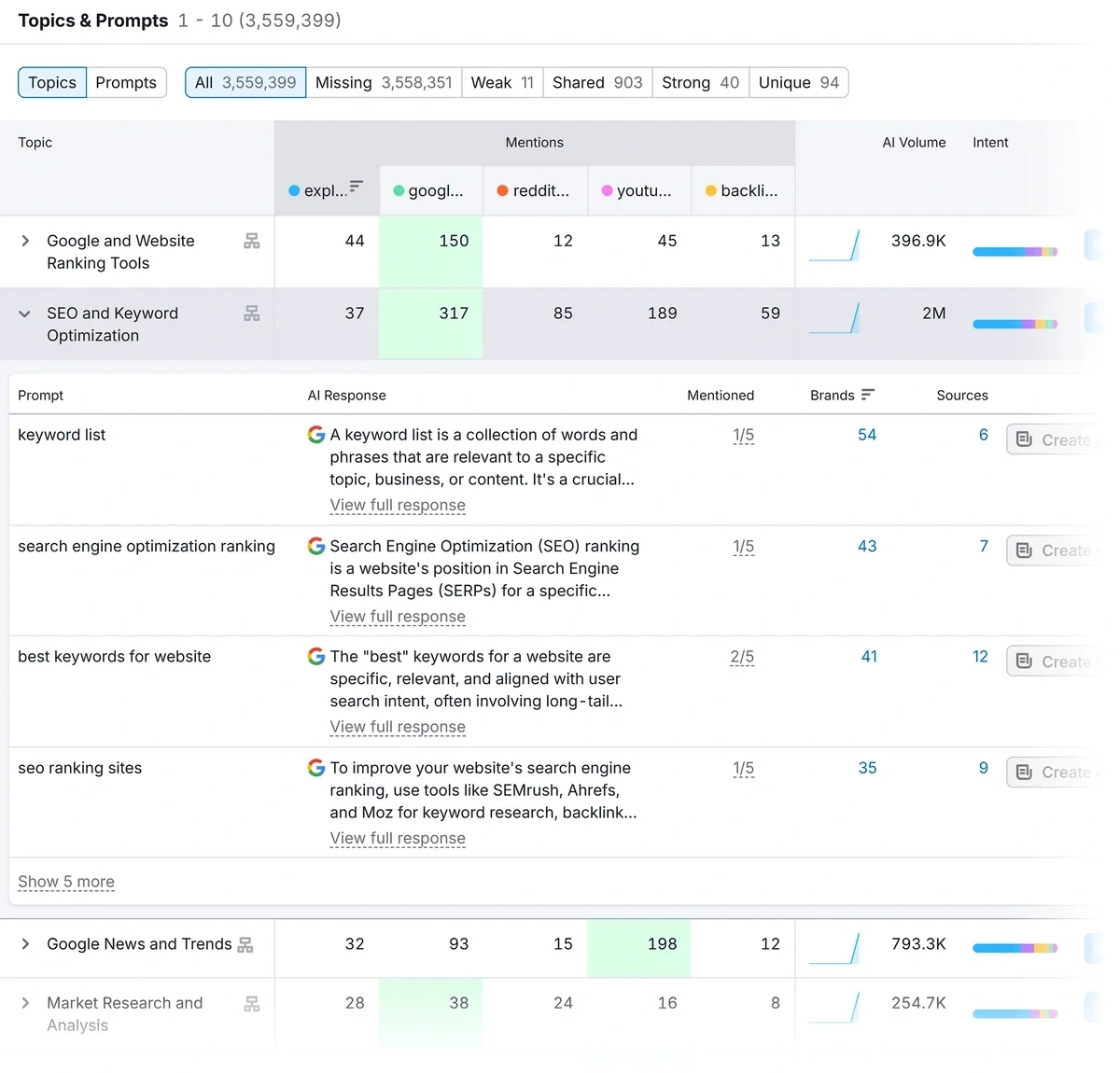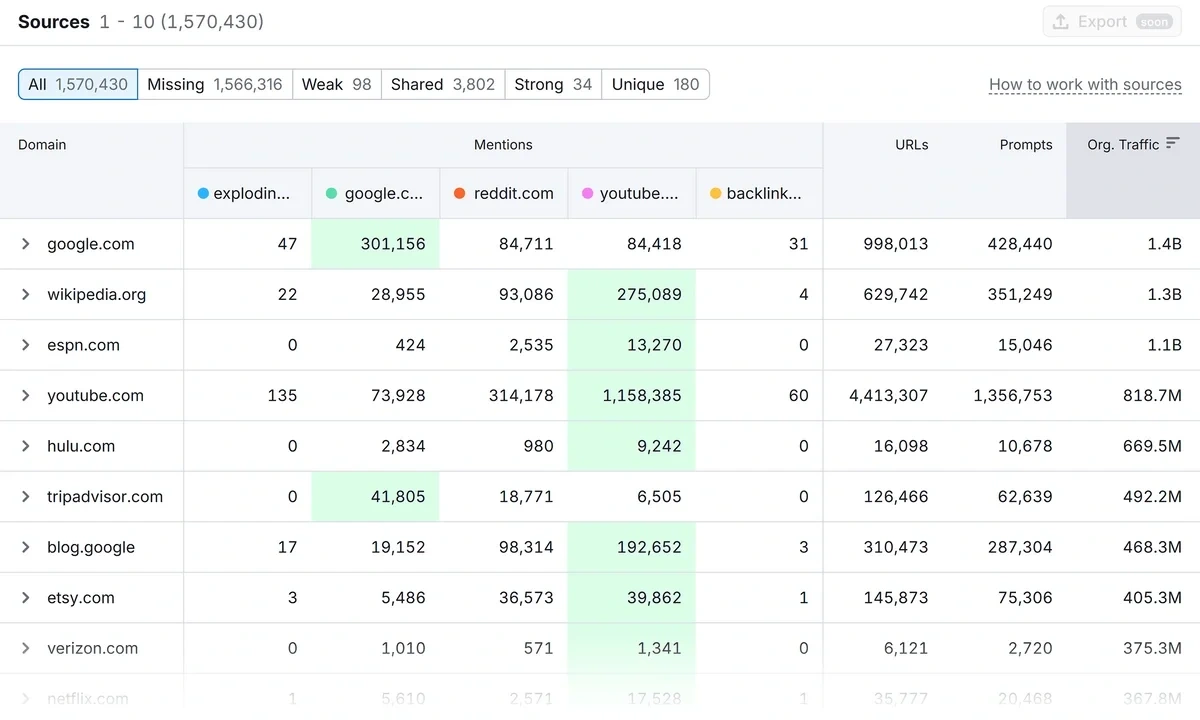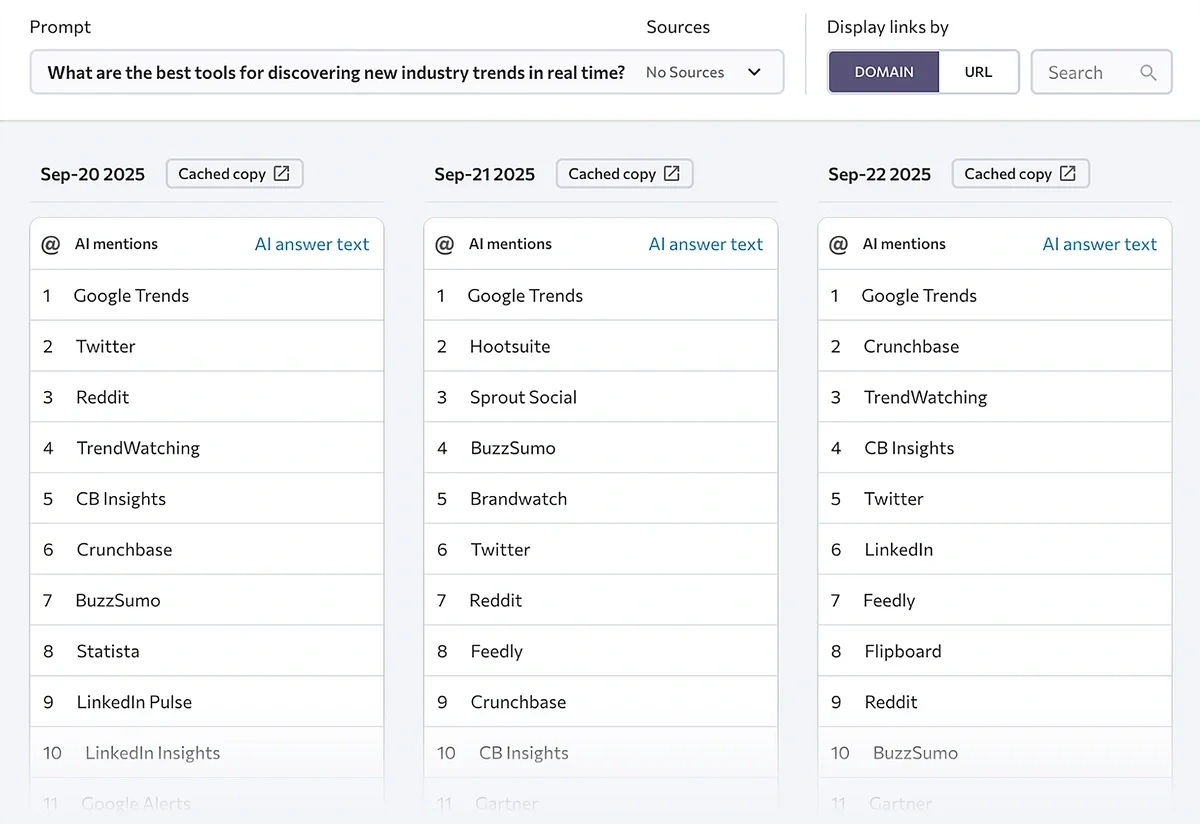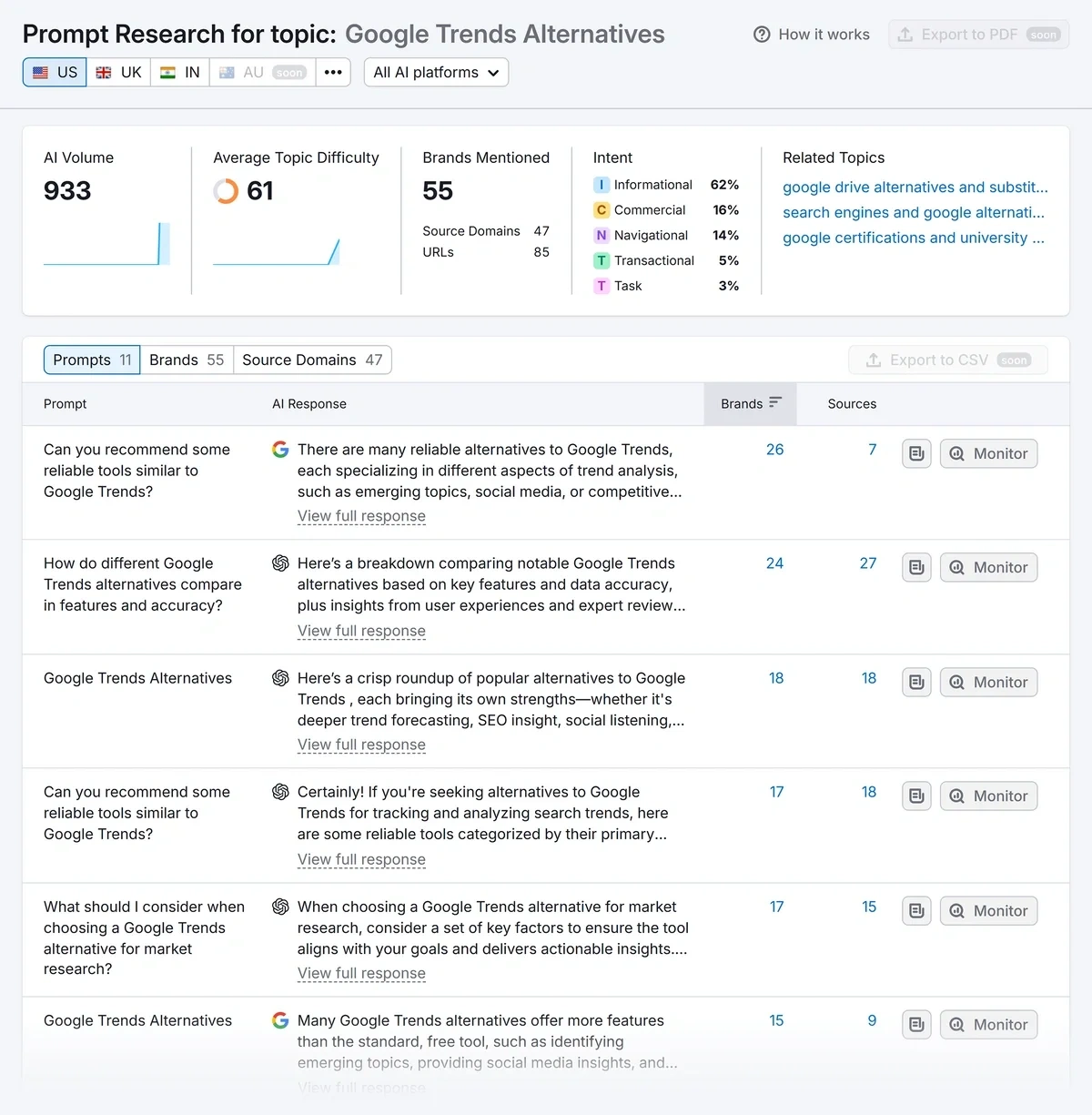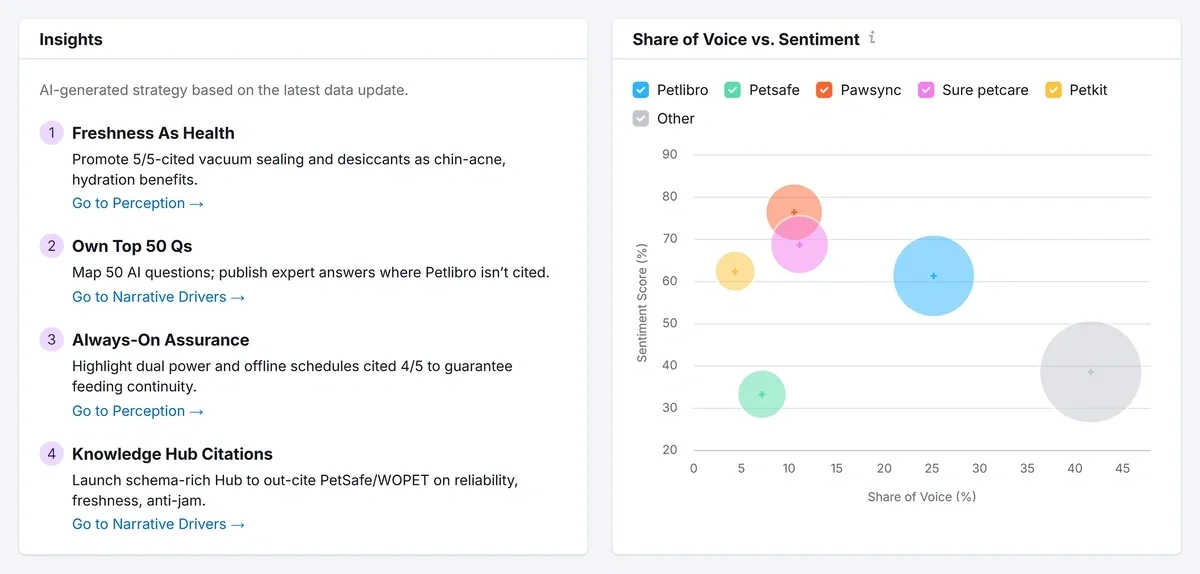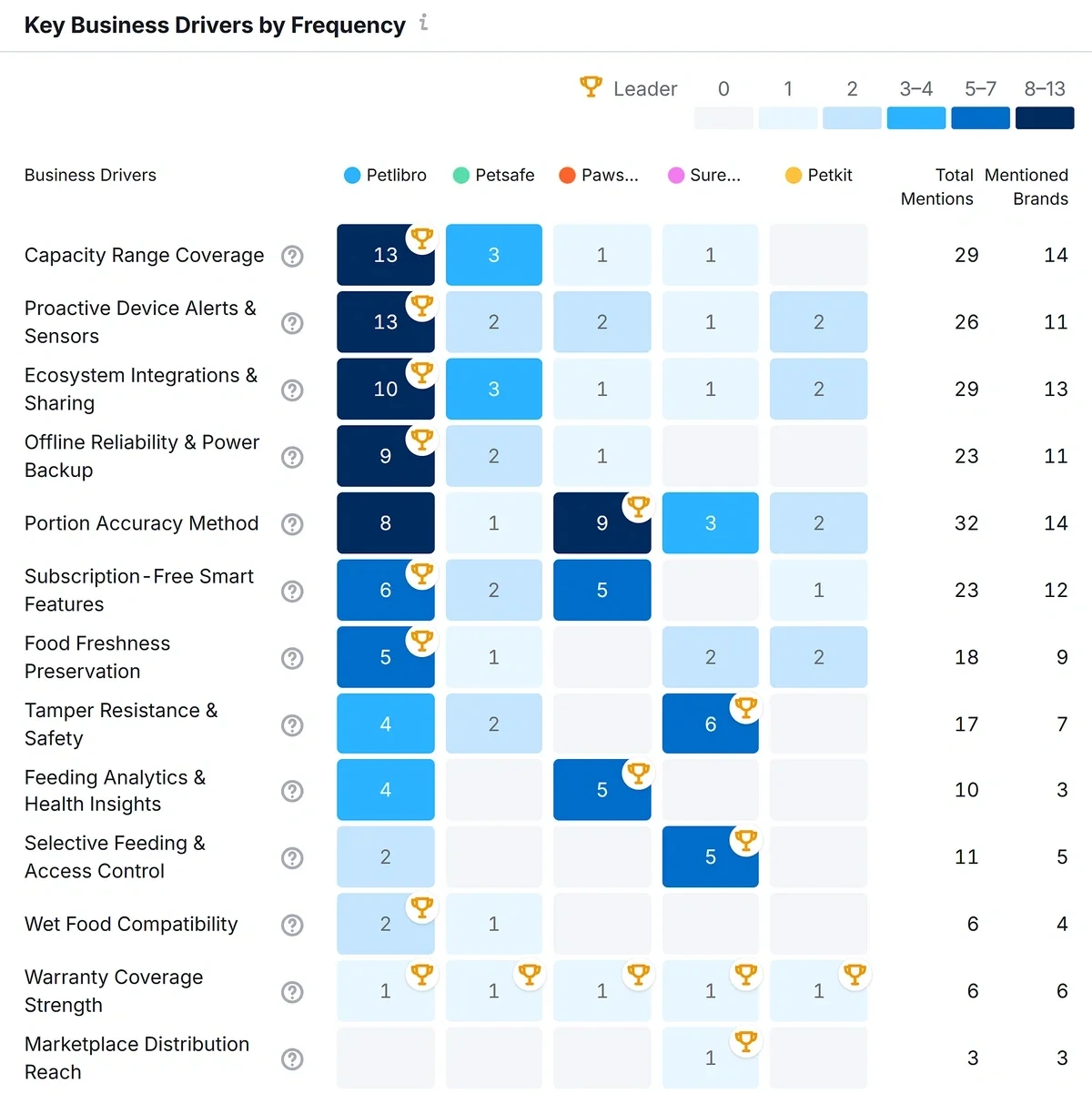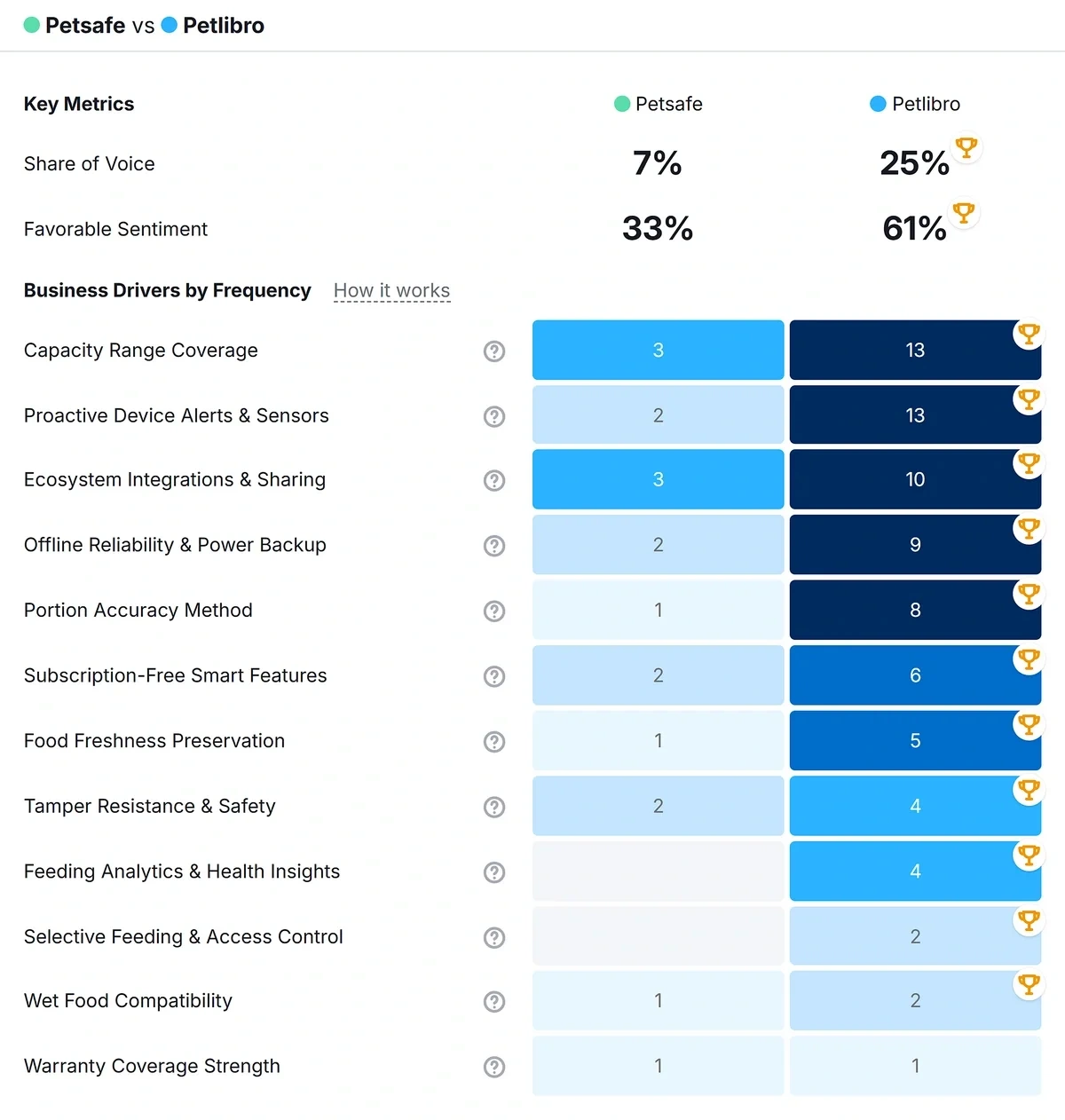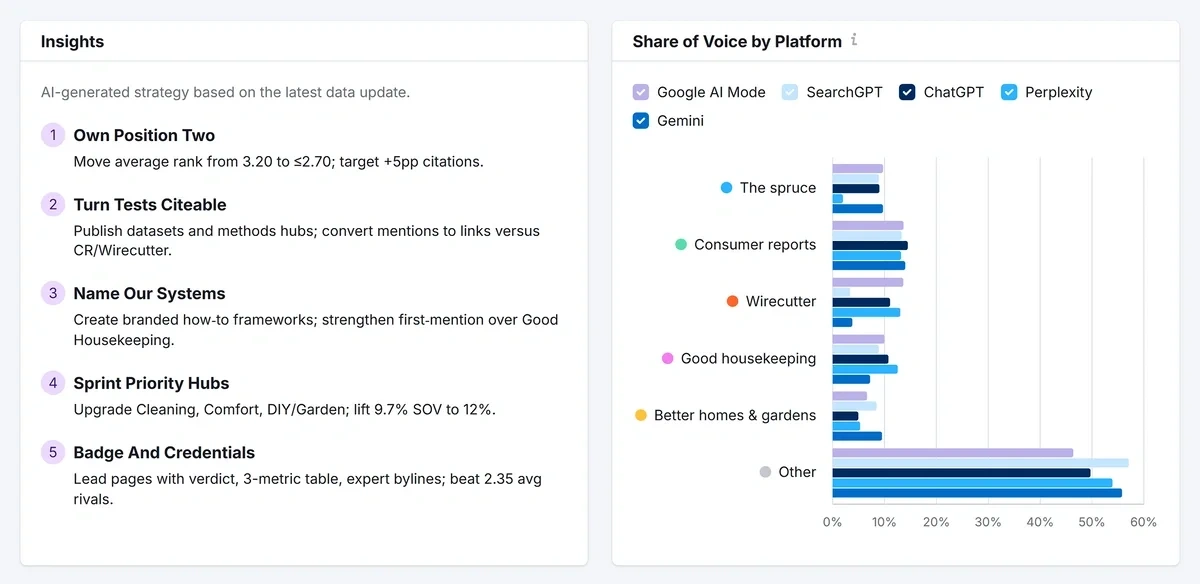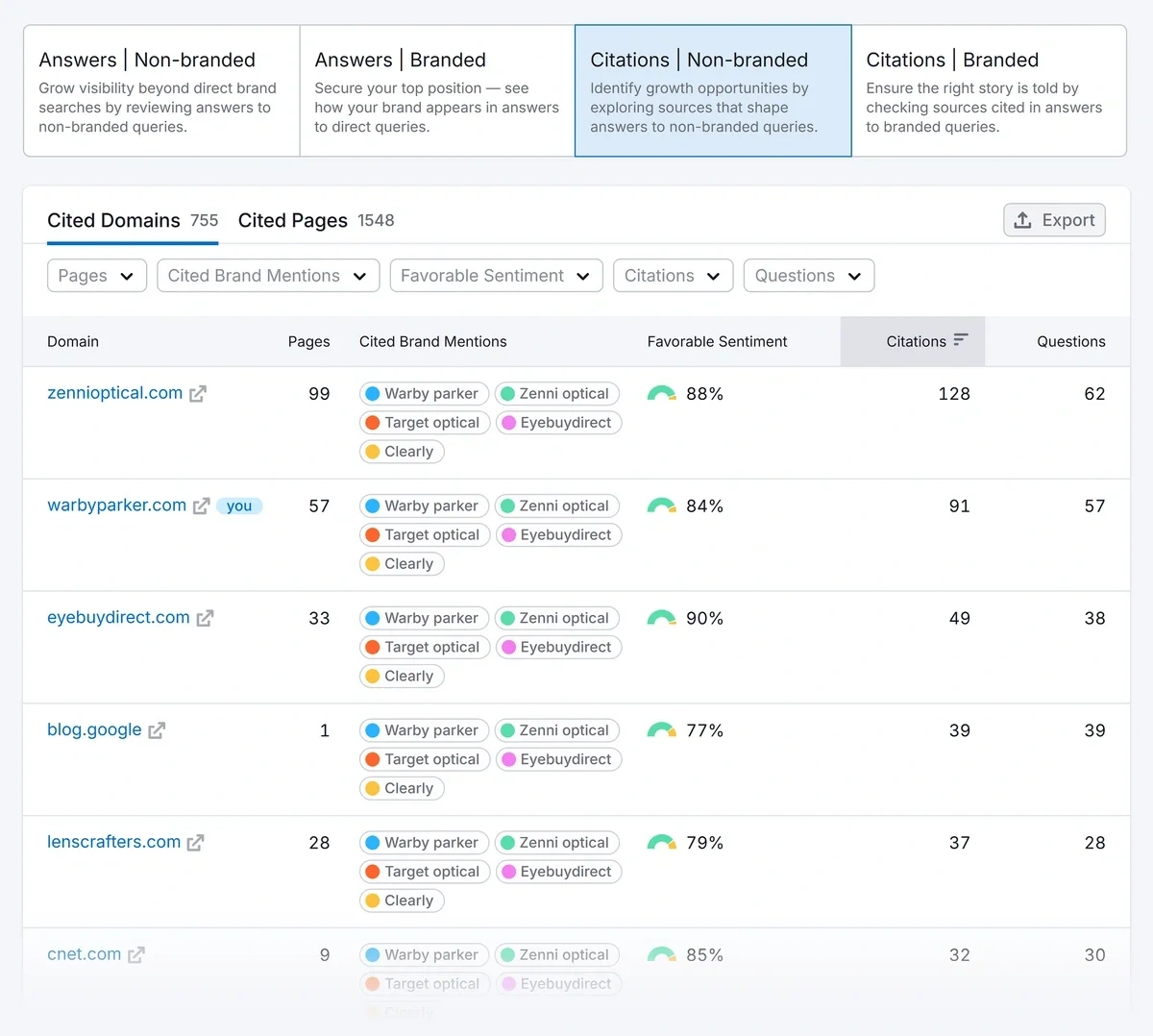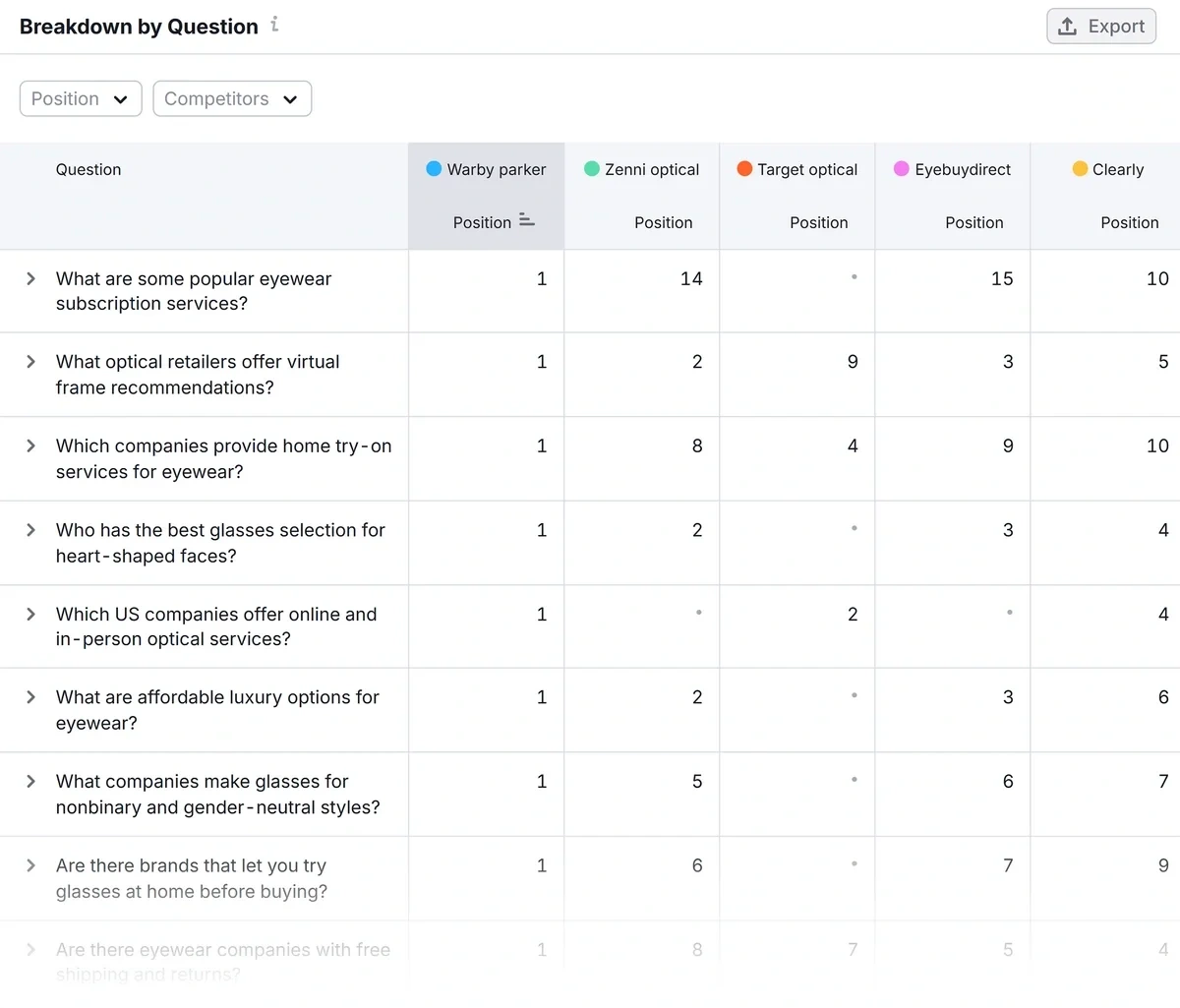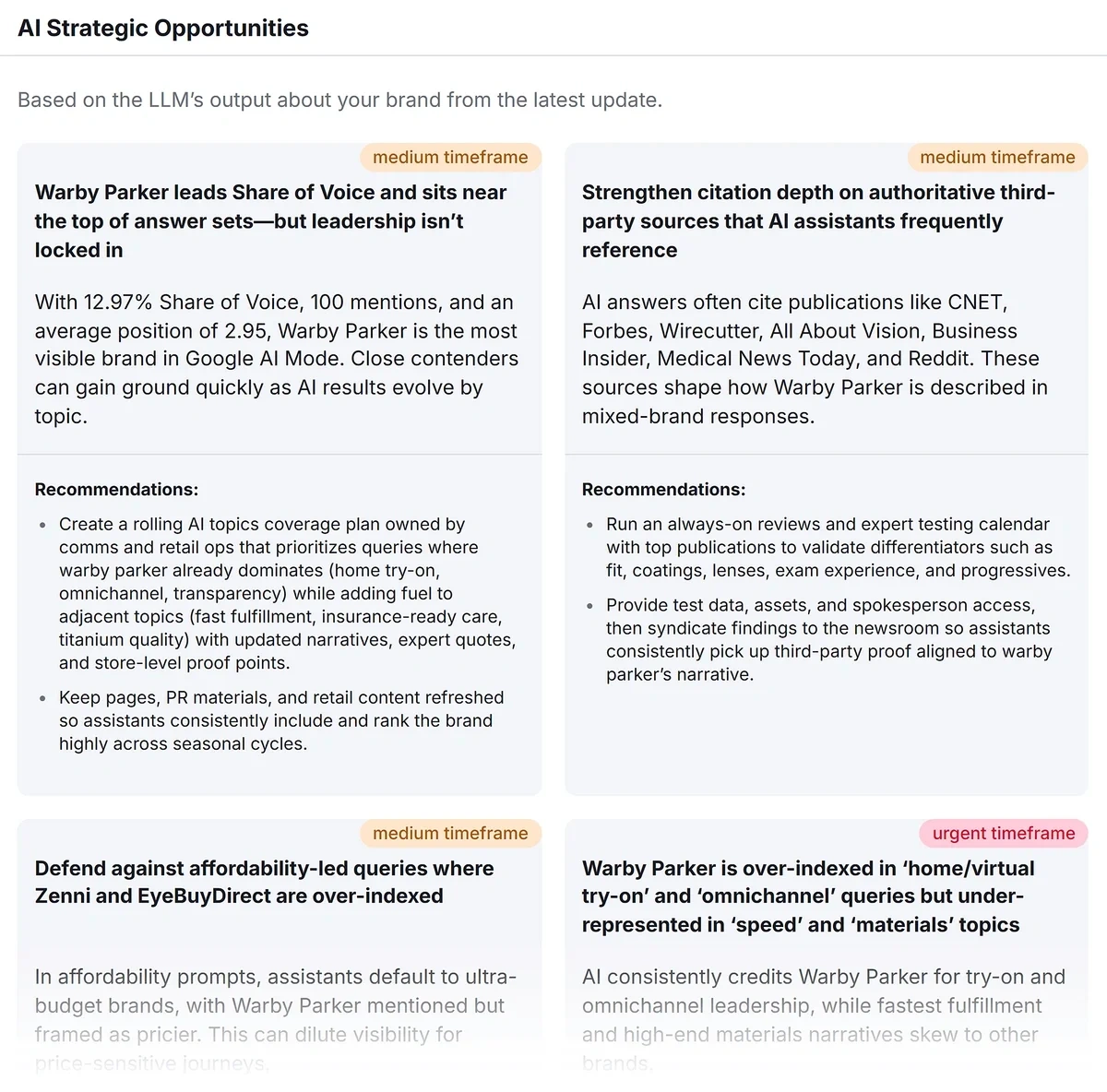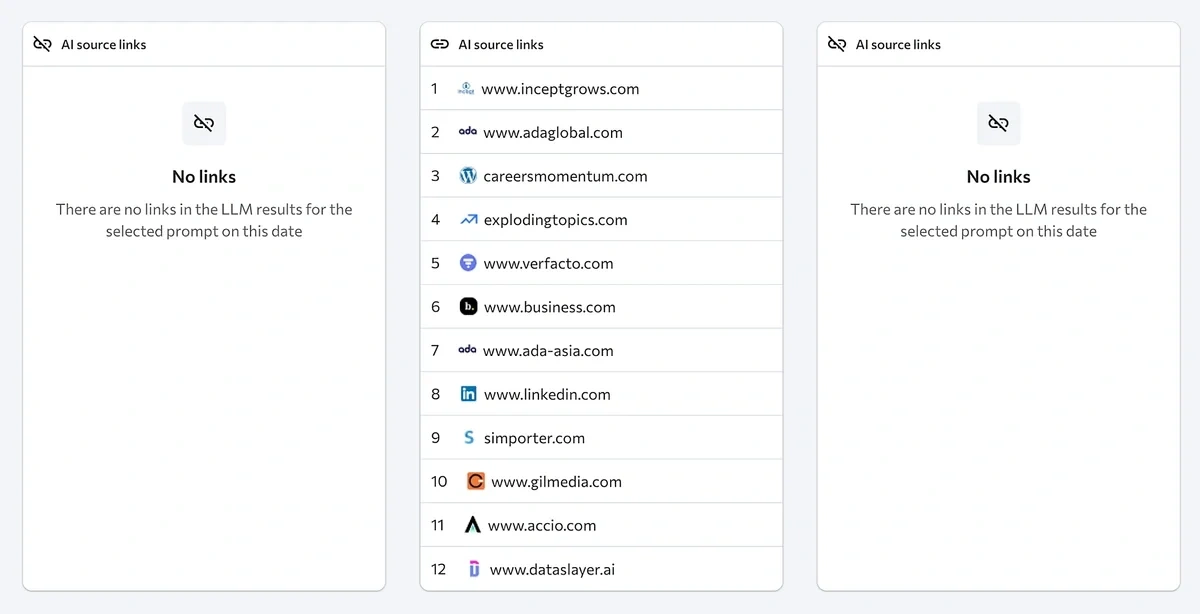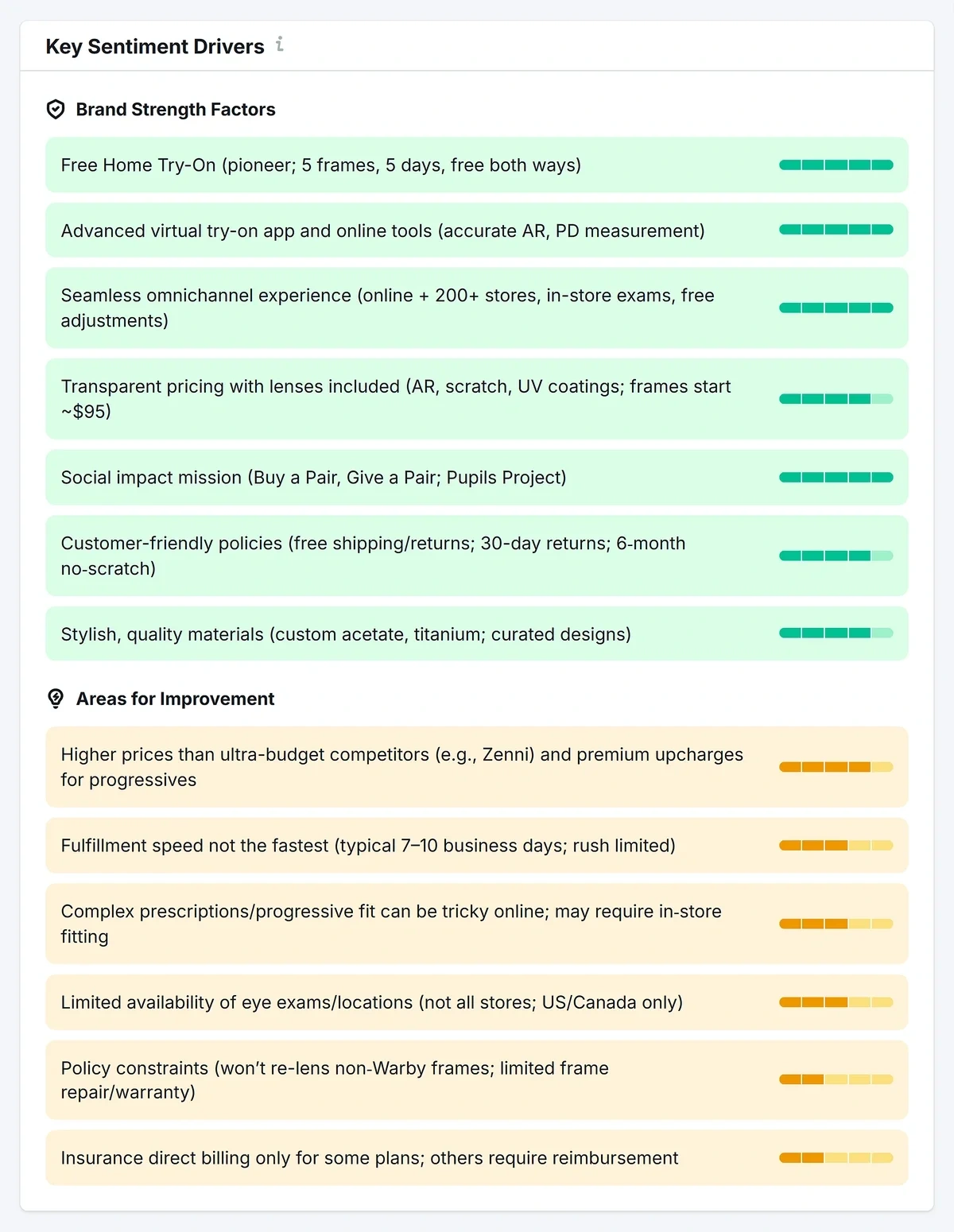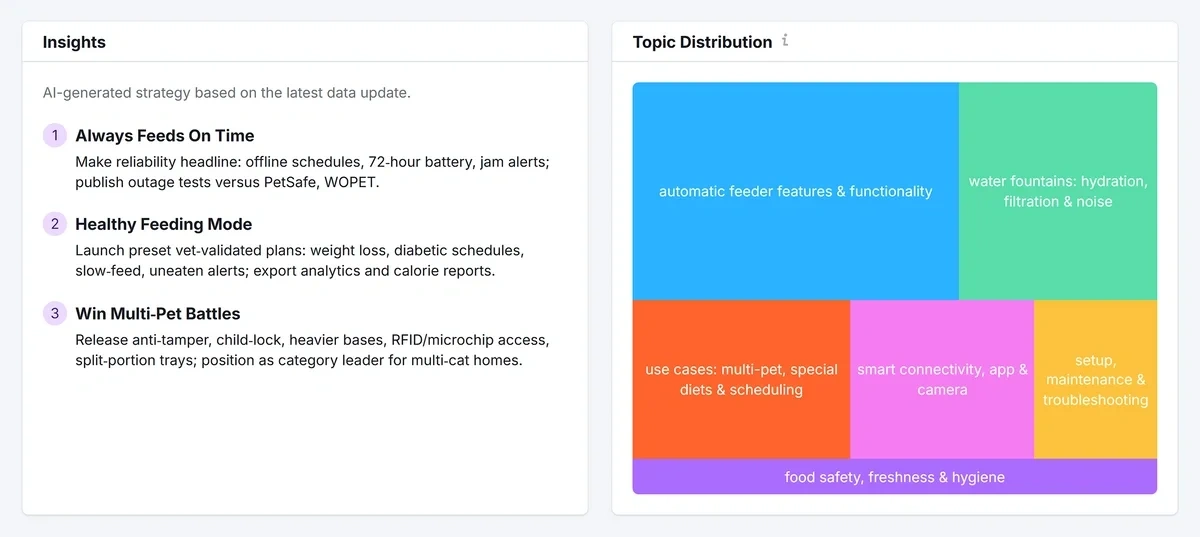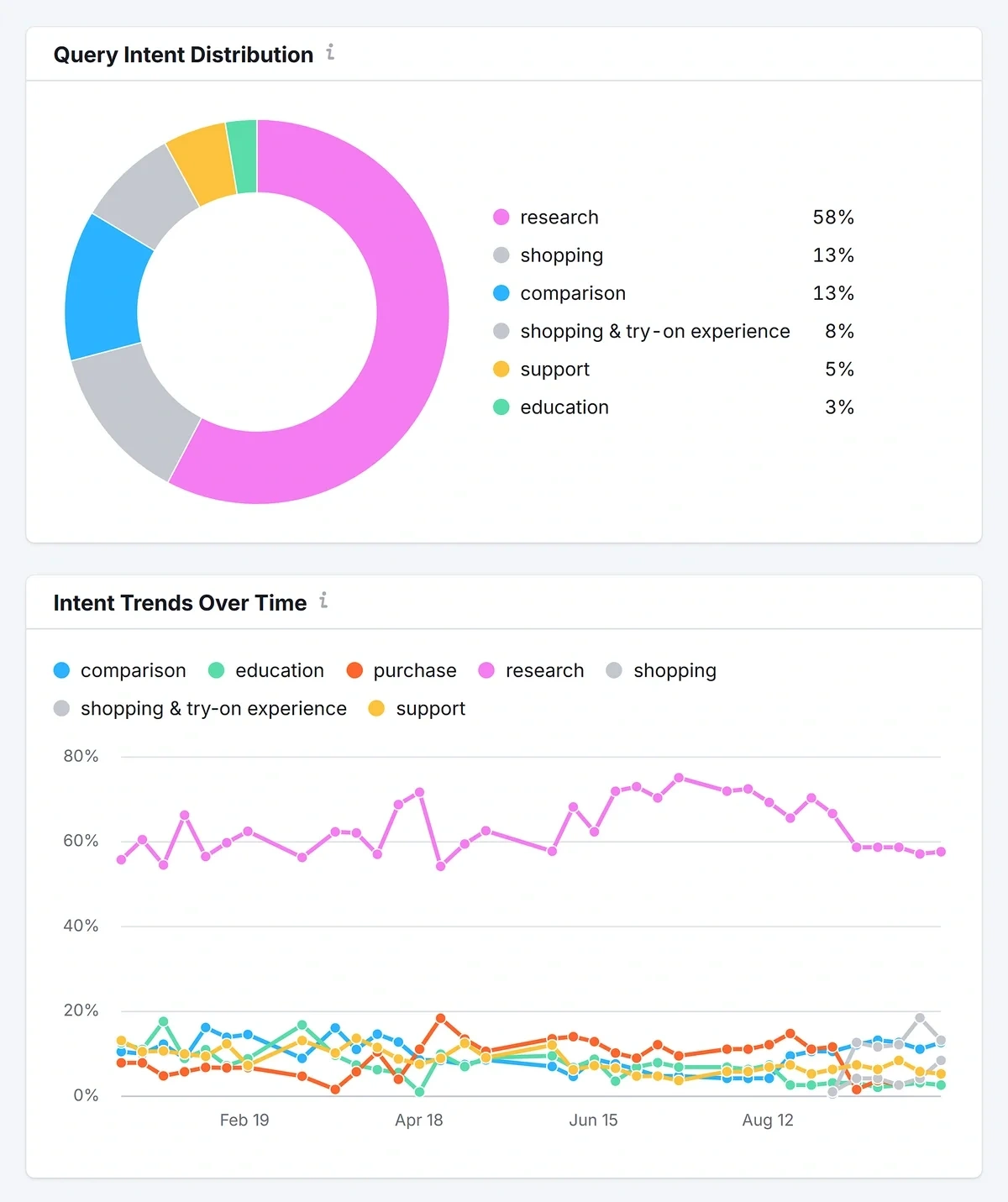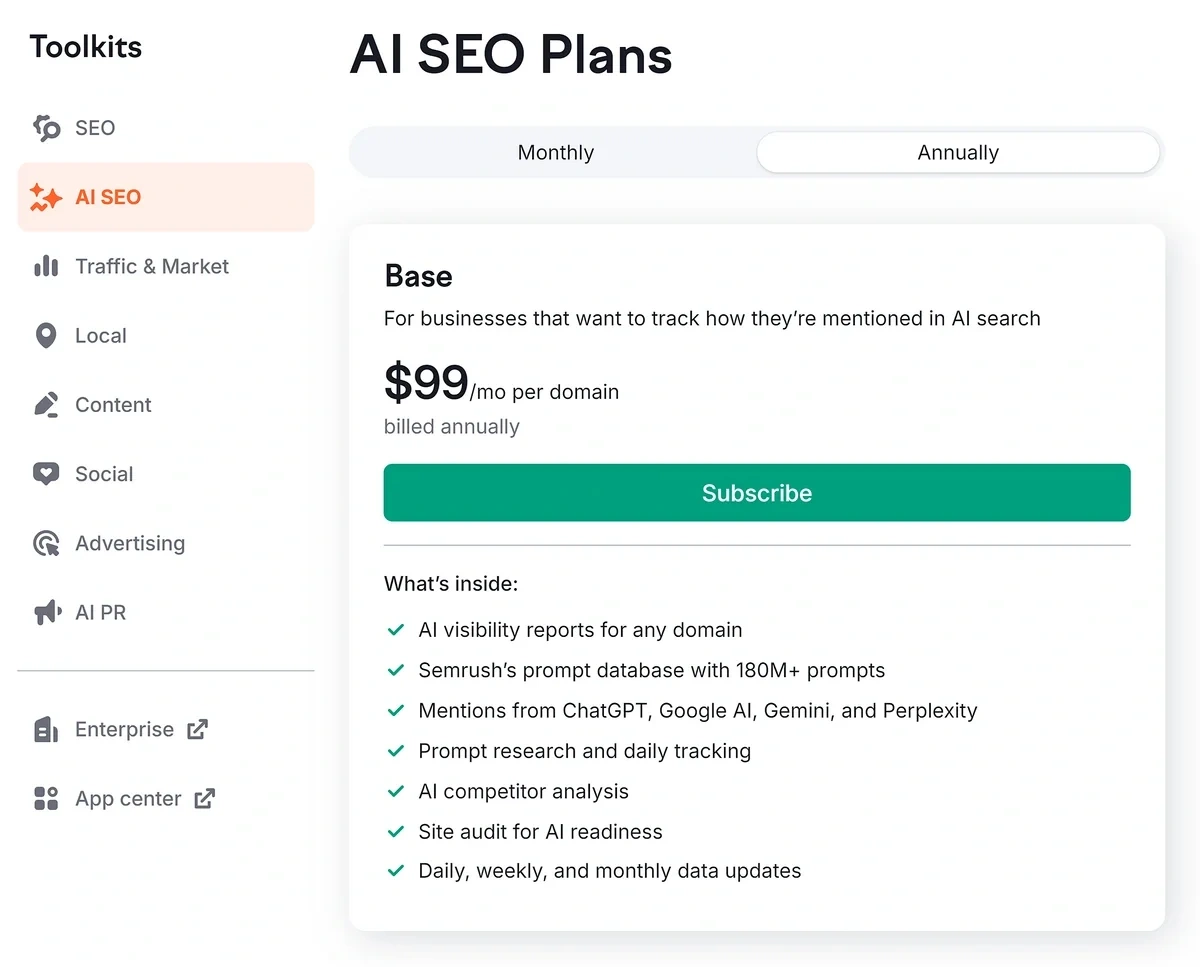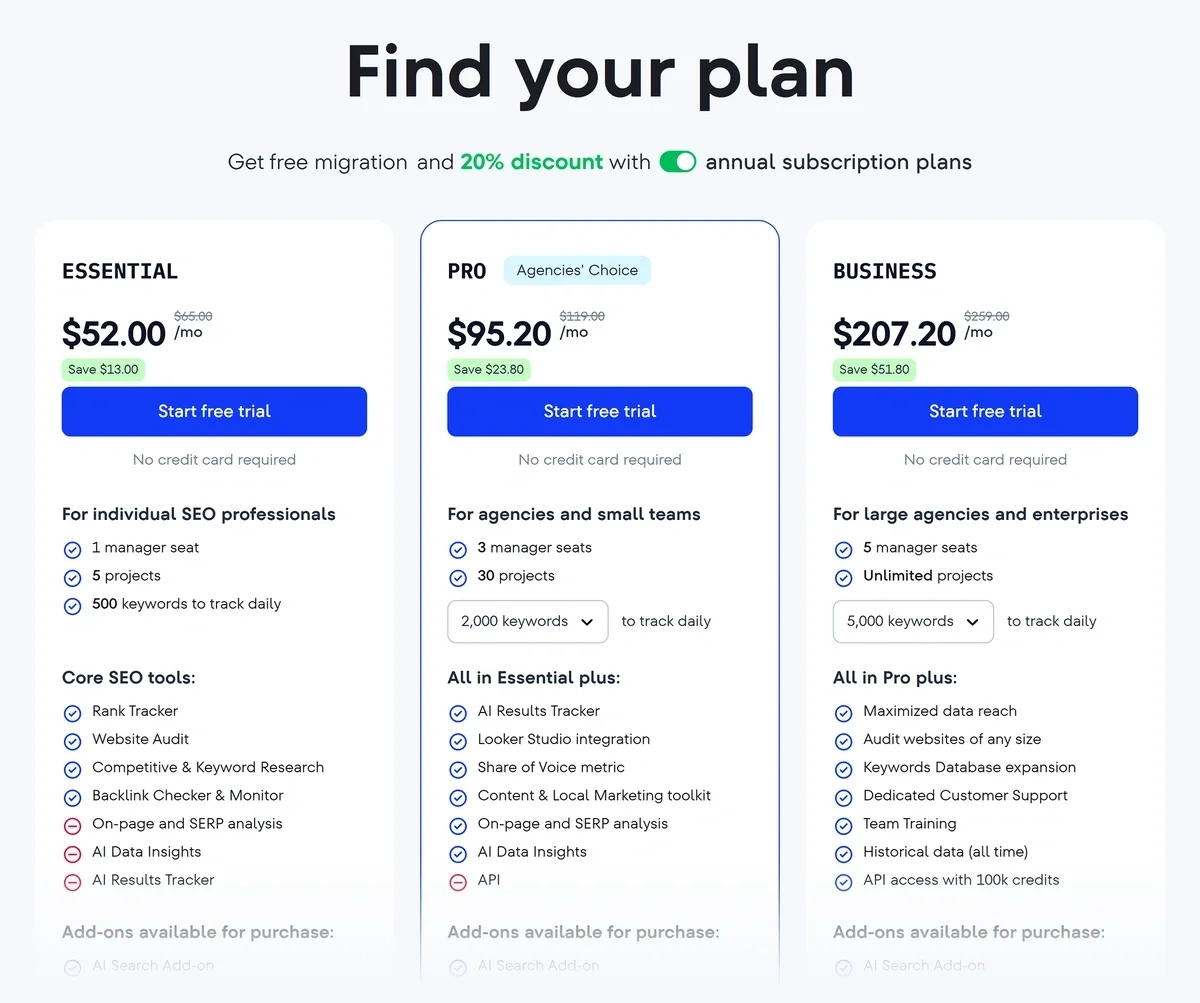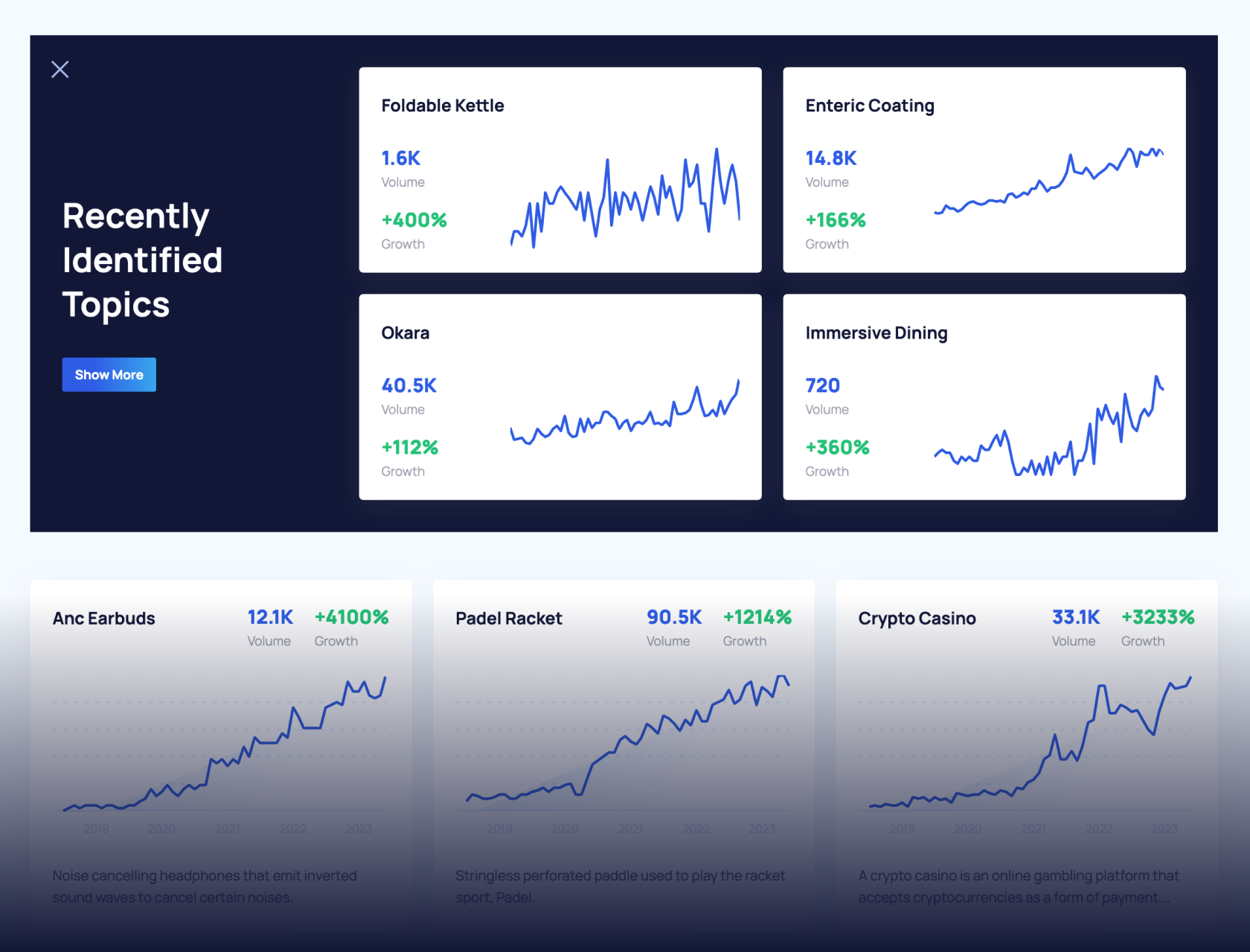
Semrush AI Visibility Toolkit vs SE Ranking AI Search Toolkit: My Honest Review
Semrush AI Visibility Toolkit gives you a consolidated analysis of your AI search visibility compared to SE Ranking. It’s my preferred choice for LLM optimization.
The main difference between Semrush AI Visibility Toolkit and SE Ranking AI Search Toolkit is that Semrush offers a more comprehensive approach to AI visibility tracking.
Semrush includes features like AI visibility and benchmarking, prompt research, competitor visibility gaps, sentiment analysis, and superior data visualization.
In contrast, SE Ranking offers a more basic yet budget-friendly solution, focusing primarily on mention and link presence tracking for your target domain.
I tested both tools extensively over a period of 8 days.
Here are my detailed thoughts.
Key Differences Between Semrush and SE Ranking
| Feature | Semrush AI Visibility Toolkit | SE Ranking AI Search |
| AI Visibility Tracking | Share of Voice, mentions, average position, and cited sources | Mention and link presence tracking for tracked prompts |
| Competitor Analysis | Gap analysis for prompt opportunities and LLM-visible source domains | Ranked lists of brands and links in AI responses deeper gap analysis |
| Prompt Research | Prompt discovery with volume and topic difficulty metrics | Not available |
| Sentiment analysis | Brand portrayal per page and perception patterns for strengths and weakness | Not available |
| AI Platforms Covered | ChatGPT, Perplexity, Gemini, SearchGPT, Google AI | ChatGPT, Perplexity, Gemini, Google AI |
| Starting Price | $99/month | $95.20/month (+$71.20 for full features) |
AI Search Presence Overview
Semrush offers a comprehensive AI visibility dashboard that automatically discovers thousands of relevant prompts across multiple AI platforms. It provides industry benchmarks and monthly trend analysis without manual setup. SE Ranking requires you to manually select specific prompts to track, making it less suitable for discovery but offering the advantage of daily updates instead of monthly refreshes.
Semrush AI Toolkit Visibility Overview
This is the main dashboard that provides an overall view of your brand presence in AI answers.
The AI visibility gauge on the left measures how frequently you’re mentioned compared to the industry average (marked as the purple needle).
You can also find your total mentions, citations, and the monthly audience (measured by the volume of topics where you’re mentioned) here.
The visibility charts are updated monthly. So you can monitor your AI visibility trends month-over-month.
Semrush also tracks AI presence separately for several different regions.
Right now, you can switch between US and UK data, but additional countries are likely in the pipeline (Canada, Australia, and so on).
Full points to Semrush for keeping this dashboard simple and easy to digest. It presents only the key metrics to help you benchmark your performance in AI answers.
You have the ability to choose the AI model you want to measure your visibility for.
By default, Semrush shows you aggregate stats for all AI platforms currently supported. This is good for a consolidated analysis. At the same time, I recommend cycling through each individual AI model.
That’s how you’ll find out if your presence in AI Overviews is stronger than in ChatGPT, for instance.
The next section gives you an excellent breakdown of the prompts working for you, sources contributing to your AI visibility, and opportunities you’re missing.
For each topic or prompt, the table reveals:
- Visibility score
- Number of brand mentions
- Volume of AI conversations on the highlighted topic
- The distribution of query intents within the topic
Switch to the Prompts tab and you can uncover extra details. Such as the total number of brands mentioned in an AI-generated response, and the total sources cited.
You can even view a cached version of the exact AI response. This neatly summarizes the list of brands, so you don’t have to scan the entire response to find which brands were mentioned in it.
It will also list down links to the source pages appearing in AI citations.
All of this data serves as the foundation of your content strategy as it reveals the exact topics and domain sources relevant to your brand.
Whether you’re looking for specific prompts you’re showing up on or impactful sources you’re missing out on, this data offers concrete intelligence you can act on.
In contrast, SE Ranking’s main dashboard for AI visibility tracking is more focused on link and mention presence in AI answers, with notable limitations as I’ll discuss next.
SE Ranking AI Results Tracker
SE Ranking tracks your visibility in AI tools based on the prompts you want to track.
You can set up prompt tracking for major LLMs like:
- ChatGPT
- Google AI Mode
- Gemini
- Perplexity
For each AI platform, the tool measures your brand presence in mentions and links.
A separate chart highlights the top 3 mentions or links you’ve earned.
It’s a nice touch because this chart lets you distinguish your overall LLM performance from the share of prompts where you’re dominating.
At the bottom of this report, you’ll find a table highlighting your brand performance for each prompt you’re tracking.
You can see exactly where you’re positioned in the AI answer if your brand is mentioned.
Plus, the table reveals your ranking as a source if a link from your site is cited by AI.
Like Semrush, you can also view the answer text snippet for all tracked prompts.
This is great for understanding the context in which your mention or citation appears.
The one advantage that SE Ranking has over Semrush is that it updates daily. So you can monitor how your search presence is evolving over time at shorter intervals.
Apart from that, SE Ranking is fairly limited. Because unless you already know which prompts you need to track, the tool won’t offer you any insights at all.
However, the SE Ranking AI Search addon will soon be introducing a source analysis report.
I haven’t had the opportunity to test this one out yet, but it will certainly add more value to the tool.
Competitor Research for AI Visibility
Semrush enables targeted competitor selection and tracks visibility across topics and sources, using a "Missing" filter to identify gaps with clear table-based comparisons. SE Ranking only displays ranked brands in date-organized cards without competitor selection.
Semrush AI Visibility Toolkit
While the AI Visibility Overview gives you a strong starting point about your AI presence in the industry, the Competitor Research feature lets you dig out visibility gaps between your brand and selected competitors.
You can discover two kinds of opportunities:
- Topics and prompts
- Sources
With the Topics and Prompts view selected, you’ll find a table listing relevant topics. Plus, it lets you compare your number of mentions for each topic versus your competitors.
Essentially, this tool is an extension of the Semrush Keyword Gap tool, applied to AI search instead.
I’m a big fan of the Keyword Gap tool because it’s very effective for finding topic ideas validated by competitors already taking advantage.
Similarly, the Topics and Prompts data works wonders for pinpointing the topics where your closest competitors are showing up during AI conversations.
Use the “Missing” filter to find all the topics and prompts where competitors appear but you don’t.
These topics can be the shortest path to increasing your Share of Voice and carving a position for yourself among competitors.
In addition to topics, you also need to be present on external websites and communities that LLMs are using as a source when mentioning competitors.
If these sources are influencing LLMs to mention your competitors, you need to get featured on those sites to enhance your LLM visibility too.
So the Competitor Research tool covers both important aspects of AI search presence: topic discovery for on-page optimization and third-party sources for off-page PR.
SE Ranking AI Search
SE Ranking lists down AI mentions for all brands in cards organized by date. It’s a decent feature for checking how rankings in AI mentions have changed over time.
But it’s not a true competitor analysis because it only shows you the ranking brands in AI responses.
It doesn’t go any deeper than that by letting you select specific competitors and tracking their visibility progress over time like you can with Semrush.
Plus, I’m not a fan of the visualization.
It’s not very intuitive to draw comparisons this way.
I much prefer Semrush’s table view that compares the mentions for your brand and selected competitors.
You can see the comparative standings far more easily with Semrush. It’s small details like these that make Semrush a more practical AI search monitoring tool overall.
Prompt Research
Semrush comes with dedicated prompt research that reveals real user prompts with AI volume scores and difficulty metrics. It lets you uncover brands mentioned and source domains cited for any topic. SE Ranking lacks this feature entirely, requiring manual prompt selection without insights into what prompts users actually ask.
Semrush AI Visibility Toolkit
The Semrush AI Visibility Toolkit also supports prompt research.
Think of it like the AI search version of keyword research.
So instead of keyword volume, you get an AI volume score. The Average Topic Difficulty is also the same basic idea as Keyword Difficulty in traditional SEO.
Semrush deserves appreciation for how easy this feature is. And it’s amazingly handy too.
Just enter a topic idea, and the tool will suggest real prompts that people are using–the same prompts where brands are showing up.
Simply put, this feature shows the exact language people use when talking to AI about topics related to your industry.
Like other parts of the AI Visibility Toolkit, you can perform prompt research for all AI platforms at once or focus on just one at a time, like ChatGPT or Google AI Mode.
It’s super useful to see a list of all the brands that are being mentioned in AI conversations for the topic in question. You can view this by clicking the “Brands” tab.
Plus, you can uncover the source domains that AI is citing when answering prompts on your topic inside the “Source Domains” tab.
It’s one of the more uniquely useful features that are not available in alternatives like SE Ranking at the time of this writing.
AI Share of Voice and Business Drivers
Semrush combines Share of Voice with sentiment analysis and automatically identifies key business drivers, illustrating competitive strengths across specific contexts. SE Ranking does not have a comparable feature at the moment.
Brand Performance: AI Visibility Toolkit
The Semrush Brand Performance tool is a summarized version of two other detailed reports:
- Narrative drivers
- Perception
To start with, this tool gives you a simple chart that tells you pretty much everything you need to know to gauge what LLMs really think about you.
The Share of Voice vs. Sentiment chart combines your search presence along with your sentiments in AI-based answers, relative to your competitors.
Ideally, you need to occupy a spot as close to the top and as farther to the right as the scale allows. This would mean you’re dominating mentions and also being portrayed favorably in AI answers.
The next charts break down these two dimensions so you can evaluate your sentiment and Share of Voice as individual metrics as well.
There’s one unique feature that I want to draw attention to: Key Business Drivers.
Semrush automatically identifies recurring patterns in AI answers and the contexts in which you frequently show up, along with competitors.
It’s an analysis of your strengths relative to your key rivals. Showing up more for certain business drivers indicates that you’re stronger than your competitor in that specific area.
It gets better. The overall business driver chart breaks down into one-by-one comparisons between your brands and your competitors.
This helps you identify your strengths and whether you’re being represented in the fashion you want when AI discusses your brand.
It’s another fairly unique feature that I haven’t come across in other AI search analysis tools, including SE Ranking.
AI Mentions and Citations Tracking
Semrush tracks mentions, citations, and average position across all major AI platforms in comparative charts. It measures Share of Voice trends and tracks citations down to the page level with sentiment scores per page. SE Ranking only monitors links and mentions for manually tracked prompts at the domain level without comparative benchmarking or sentiment analysis.
Narrative Drivers: Semrush AI Visibility Toolkit
Semrush measures your AI Share of Voice by the number of mentions in a representative set of query prompts and how prominently you appear in an AI-based response.
What I particularly like here is how conveniently Semrush stacks comparative performance in a single chart.
So at a glance, you can see how your SoV compares with your competitors across all major AI platforms:
- Google AI Mode
- SearchGPT
- ChatGPT
- Perplexity
- Gemini
The AI visibility breakdown as you scroll down is even better.
If you’re curious about changes in your share of voice over time, you can view the Share of Voice trend chart.
Unlike the chart at the top, which shows you the data for all LLMs, this chart shows you the recent trend in SoV for a selected AI tool only.
This helps you spot your performance more accurately for a specific AI model.
Moving on, you’ll find similar trend charts highlighting how your mentions and average position have grown recently.
Mentions tell you about how frequently you appear in AI-generated answers compared to your competitors. The higher your count, the wider your brand reach in AI conversations.
I really appreciate having a separate chart focusing on just AI mentions. It's a major factor in driving your AI visibility
In conversations that trigger brand mentions, LLMs usually suggest multiple alternatives to the user.
Your first goal should be appearing in these AI-generated lists.
The second goal is to dominate the list by claiming the top position.
The Average Position data summarizes how prominently your brand is placed in such AI-generated lists on average.
AI platforms don’t necessarily list the best option at the top like you’d expect from a listicle on the web. So there’s no obvious way to influence how AI ranks you in a list. That said, it’s helpful to know where you’re positioned in relation to your other competitors.
The next section shows you the trend line for top domains.
You can use this to find how the frequency of these domains is changing in AI citations during industry-relevant conversations.
So if you’re curious which websites AI is extracting your mentions from, you’ll find a great deal of useful info in the table below.
It shows you a list of prompts where you’re showing up versus the exact competitors you’ve selected for this analysis.
You can also find sentiment scores at the domain and page level by selecting the Cited Domains or Cited Pages tab respectively.
Semrush’s ability to track citations at the page level stood out to me because knowing the exact page contributing to AI visibility is really useful when you’re planning your PR and collaboration outreach.
It’s also a feature that doesn’t exist in SE Ranking yet.
The same table also lets you view question prompts driving visibility for your brand or your selected competitors.
You can sort this table by your position in AI mentions or your competitor’s positions. It’s a very handy filter to spot questions where you already appear but not prominently enough.
Another standout feature that might seem like a gimmick at first but is actually remarkable is the AI-generated insights at the bottom.
These insights are highly tailored to your brand’s current performance and standing. They appear at the bottom of every tool in the AI Visibility Toolkit, but the context matches the purpose of the report you’re seeing
The recommendations focus on covering your weaknesses and exploiting competitive gaps to maximize AI visibility opportunities.
I suggest considering these suggestions as potential strategic moves if you can spare the resources for them.
SE Ranking AI Search Citations Analysis
SE Ranking keeps things simple by tracking your presence in citations or direct mentions in AI-based answers.
This is available in the same exact same report I discussed earlier: The AI Results Tracker.
SE Ranking doesn’t offer any additional details in a dedicated report focused on links and citations.
But for comparison’s sake, there are a few differences between how Semrush and SE Ranking track LLM citations.
SE Ranking focuses on links that point to your domain.
It even tracks your position in the list of sources if you’re cited in a response to a tracked prompt.
However, it’s not very intuitive to see how you stack up against the competition because SE Ranking only focuses on your domain.
And the competitor research feature only displays a list of all source links and brands mentioned in the prompt you’re tracking.
You can only view this information one-by-one for each tracked prompt.
It’s not a very practical approach for analyzing AI search presence trends for your key industry players.
In contrast, Semrush summarizes your visibility metrics along with competitors, so you have a benchmark to measure against.
Another limitation is that SE Ranking only tracks sources at the domain level.
If you want a detailed breakdown to see which sources are citing which brands with exact page URLs, that’s something you only get with Semrush.
Brand Portrayal and Perception
Semrush provides advanced sentiment analysis showing how AI perceives your brand versus competitors. The tool summarizes key sentiment drivers that reveal brand strengths and weaknesses across different LLMs. SE Ranking offers no sentiment tracking or perception analysis whatsoever
Semrush AI Visibility Toolkit
Semrush AI Toolkit has a dedicated report that analyzes how AI tools perceive your brand: Perception.
Like all AI Toolkit features, this one starts with a comparative chart that shows your perception in LLMs as opposed to your rivals.
It’s easy to digest the big picture with this chart. Plus, you’ll know if you’re performing as well as, worse, or better than your competitors in terms of AI sentiments.
The meat of this report is in the Key Sentiment Drivers section.
This gives you a superb summary of the strengths and weaknesses of your brand as perceived by different LLMs.
Knowing your perceived weaknesses helps inform your product development roadmap.
Are LLMs pointing out any missing features in your product?
If so, that’s an opportunity worth considering in your future product updates.
At the same time, you need to push more content that directly addresses your perceived weaknesses.
Think about explaining any limitations AI might be discussing about you to influence AI responses in your favor. Also, showcase specific ways in which your solution is better or more affordable for your audience.
This will help you shape the narrative about your weaker areas as AI discovers your content, smartly addressing these issues.
These are just some of the ways that the Perception report in Semrush AI Toolkit offers practical insights for your product and content marketing plan.
SE Ranking doesn’t offer LLM sentiment tracking and analysis, so there’s no direct comparison between Semrush and SE Ranking for this feature
Query Prompts and Intents Research
Semrush offers the Questions report that groups industry prompts by topic themes and maps user intents to assist with LLM-optimized content strategy. SE Ranking lacks any comparable feature for analyzing AI-relevant question patterns and content opportunities.
Questions: Semrush AI Visibility Toolkit
The “Questions” report in the Semrush AI Visibility Toolkit uses prompts relevant to your industry and groups them by topic themes.
It’s a useful feature that helps you think about AI-relevant topics in a more organized way.
Sure, you can look at individual prompts that the AI Visibility Toolkit automatically tracks for you.
But given the highly probabilistic nature of LLM responses, it’s not practical to optimize content for specific query prompts.
Instead, you need to address clusters of prompts by focusing on the themes they’re forming together. This is why this feature works so well.
In addition to identifying themes, you can determine the kind of content formats you should be producing to solve popular user intents for customers likely to discover you through LLMs.
If the user intent is more inclined towards research and education, then you know what your content focus should be.
I appreciate that the Topic Analysis & Patterns section maps each intent with topic themes and queries.
It allows you to think more clearly about the relationship between a query and its underlying intent
Creating intent-first content is essential for covering the query fan-out and persona-driven responses in LLMs.
This is why I love the idea behind this feature; it’s one of the more unique aspects of the Semrush AI Visibility Toolkit that I haven’t seen in other tools yet.
I wasn’t able to locate comparable features in SE Ranking during my testing.
Pricing: Semrush AI Visibility Toolkit vs SE Ranking AI Search
Semrush AI Visibility Toolkit costs $99/month as a standalone product with superior AI insights, while SE Ranking starts cheaper at $95.20/month with the core SEO analysis features also included. SE Ranking requires an additional $71.20+ AI Search add-on for full competitive analysis features, making it potentially more expensive than Semrush for comprehensive AI visibility tracking.
Semrush AI Visibility Toolkit Pricing
You can get the Semrush AI Visibility Toolkit for $99/mo. Currently, this is the only plan available, though it’s likely Semrush will launch additional tiers as they expand the toolkit’s features.
Although it’s more expensive than SE Ranking, I think the quality of insights and information about AI visibility is also superior in Semrush.
Besides, Semrush offers separate modules depending on the features you require.
So if you’re only interested in optimizing for LLM, you only need the AI Visibility Toolkit. You can save your costs by picking specific Semrush toolkits that matter for your business.
If you need to track SEO and AI analytics, Semrush One gives you the best value.
The newest bundle offering from Semrush, Semrush One combines all the best features of the SEO toolkit with the power of the AI Visibility toolkit. It's the best deal if you want a comprehensive look at your site analytics. Plans start at $165.17/month when you pay annually.
You can also take advantage of an exclusive 14-day trial and spend more time getting to know all the features.
SE Ranking AI Search Toolkit Pricing
SE Ranking includes the AI Results Tracker in its Pro and above plans, starting at $95.20/month.
In addition, there’s an AI Search add-on that unlocks additional features and prompt limits.
For instance, you can only analyze your domain with the core Pro plan. But the AI Search addon lets you analyze the AI visibility of your competitors as well.
The AI Search add-on pricing varies depending on the number of prompts you need to track.
This starts from $71.20 for 200 prompts, in addition to the cost of your core plan.
In short, SE Ranking is cheaper than Semrush if you want its SEO features along with the AI Results Tracker.
But for the full feature set, you’ll need to buy the AI Search add-on, which will drive up your total subscription costs.
Should You Choose Semrush AI Visibility Toolkit or SE Ranking AI Search Toolkit?
I recommend Semrush AI Visibility Toolkit if you need:
- AI visibility analysis for mentions, citations, and sources
- Strong competitor research data with source and prompt performance gaps
- Prompt research to uncover what people are actually searching for in your industry
- Comprehensive sentiment analysis to understand how AI tools portray your brand
- Superior data visualization with intuitive comparative charts for competitor analysis
You should pick SE Ranking if you want:
- A more budget-friendly option, especially if you're already using SE Ranking's core SEO features and want basic AI tracking
- Simple domain-level tracking without the complexity of advanced sentiment and citation analysis features.
Stop Guessing, Start Growing 🚀
Use real-time topic data to create content that resonates and brings results.
Exploding Topics is owned by Semrush. Our mission is to provide accurate data and expert insights on emerging trends. Unless otherwise noted, this page’s content was written by either an employee or a paid contractor of Semrush Inc.
Share
Newsletter Signup
By clicking “Subscribe” you agree to Semrush Privacy Policy and consent to Semrush using your contact data for newsletter purposes
Written By


Osama is an experienced writer and SEO strategist at Exploding Topics. He brings over 8 years of digital marketing experience, spe... Read more

